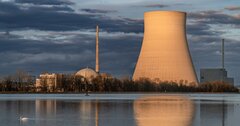
It’s like clockwork: Whenever a natural disaster strikes, certain economists praise the “silver lining” of this “stimulated demand” and the positive economic effects that are sure to come from this calamity. The Japanese earthquake and tsunami are no exception.
In “The Silver Lining of Japan’s Quake,” New Perspectives Quarterly editor-in-chief Nathan Gardels writes for the Huffington Post, “No one… would minimize the grief, suffering and disruption caused by Japan's massive earthquake and tsunami. But if one can look past the devastation, there is a silver lining. The need to rebuild a large swath of Japan will create huge opportunities for domestic economic growth. ...”
Gardels goes on to explain that “Japan has been wallowing in stagnation for years despite massive government stimulus programs and zero-interest rates. … By taking Japan's mature economy down a notch, Mother Nature has accomplished what fiscal policy and the central bank could not.”
But this Keynesian economic thinking is not relegated to just one columnist. In a CNBC interview, Larry Summers, who was the top economic advisor to President Obama, said, “[The disaster] may lead to some temporary increments ironically to GDP as a process of rebuilding takes place. In the wake of the earlier Kobe earthquake Japan actually gained some economic strength.”
One of the more prominent examples of this thinking came in the wake of the 9/11 terrorist attacks. New York Times columnist and Princeton University economist Paul Krugman wrote, “Ghastly as it may seem to say this, the terror attack — like the original day of infamy, which brought an end to the Great Depression — could even do some economic good.” Krugman went on to note that the economy would be boosted as “people rush out to buy bottled water and canned goods” and “rebuilding will generate at least some increase in business spending.”
With all the economic good these disasters lead to, one wonders, why doesn’t the U.S. government hire hoodlums to run around destroying property? Why don’t newspapers sing praises when a local store is destroyed in an accidental fire? After all, think of the new construction jobs!
The answer is found from French economist Frederic Bastiat in his 1850 essay, “What Is Seen and What Is Not Seen.” As he explains, “There is only one difference between a bad economist and a good one: the bad economist confines himself to the visible effect; the good economist takes into account both the effect that can be seen and those effects that must be foreseen.”
In other words, what one sees are the workers paid to rebuild these destroyed cities; but what is not seen is where that money would have been spent if not for the disaster. Instead of being used to construct buildings, it would buy food, shelter, clothing and other goods. With the disaster, society has a new building, but without it they have a building and food, shelter, clothing or whatever else this money could be spent on. A country is much richer without the disaster.
As Bastiat notes, a provider of these other goods “is always in the shadow, and who, personifying what is not seen, is an essential element of the problem. It is he who makes us understand how absurd it is to see a profit in destruction.”
It is only when you ignore the unseen that one can see a disaster that killed 6,000 people and left 300,000 homeless as a positive economic event.
Get insightful commentary and the most reliable research on Michigan issues sent straight to your inbox.

The Mackinac Center for Public Policy is a nonprofit research and educational institute that advances the principles of free markets and limited government. Through our research and education programs, we challenge government overreach and advocate for a free-market approach to public policy that frees people to realize their potential and dreams.
Please consider contributing to our work to advance a freer and more prosperous state.